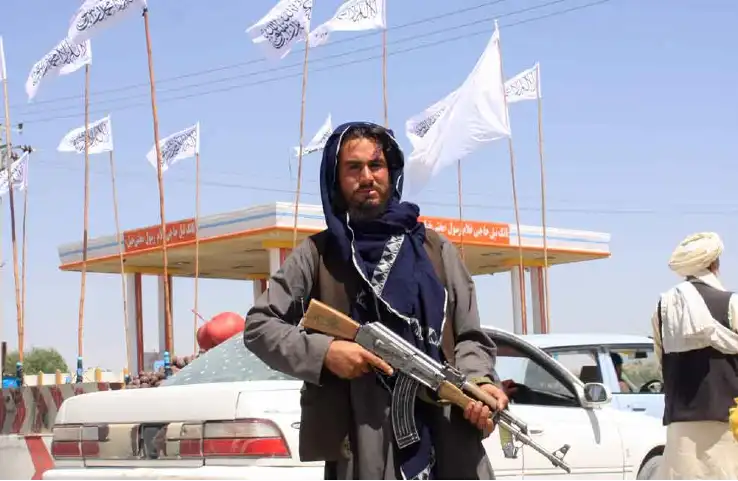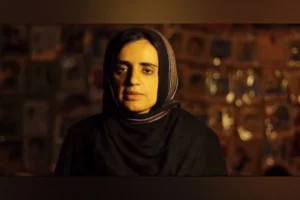The multiple deadly bombings at the Kabul airport, have highlighted two things—the vulnerabilities of the ruling Taliban and the frail reality of Afghanistan overrun by terrorists of all kinds.
Nearly four decades of conflict has spawned a lawless region, compounded by Afghanistan's complex ethnic, tribal, regional and religious identities. Add to that the frustrations of a failed State in Pakistan and the American fixation of mending everything through its military.
Even as the Afghans stare into a twilight zone, India Narrative looks at the non-State actors who will battle and try to govern Afghan men, women and children—considering that they are flush with weapons and profess a jihadi ideology.
Al-Qaeda:
The main reason why the US came to Afghanistan in 2001 were the Al-Qaeda attacks on the twin towers of the World Trade Centre and the Pentagon. The Americans felt threatened on their own soil for the first time in their lives. Having fought alongside the Taliban against international forces, Al-Qaeda remains closely tied to Afghanistan's current dispensation as evidenced from the Taliban statement that Osama bin Laden was not related to the twin tower attacks.
Al-Qaeda in Indian Subcontinent (AQIS):
Created by Al-Qaeda as a separate group, AQIS focuses on strengthening its presence in the region and creating local militants. After coming to power, the Taliban have released Al-Qaeda terrorists from the jails, pointing to the close relations between the two groups. AQIS's main aim is to establish an Islamic caliphate in the Indian subcontinent.
Islamic State-Khorasan Province (ISKP):
Many experts believe that the Islamic State in Iraq and Syria (ISIS) is known as ISIS-K in Afghanistan with 'Khorasan' focusing on the Af-Pak region. Hardcore fundamentalists, this group is against the Taliban as it considers the latter to be less Islamic. Some of its most devastating attacks have been on minorities–the Afghan Sikhs as well as the Shia Hazaras.
Just a few days back, the Biden administration had warned that this group is likely to attack Americans, which eventually happened at the Kabul airport.
Also Read: Concerns for Pakistan rise with Kabul twin blasts
Lawyer and geopolitical analyst, Mark Kinra told India Narrative that the ISKP seeks to, "replace the world order with a global Islamic State based on ISIS’s strict interpretation of the Islamic law. The ISKP draws its cadres from disgruntled Taliban members and Pakistan madrasas".
The ISKP was almost decimated by the US in Afghanistan but has been nurtured by Pakistan. The leftover militants are believed to be regrouping themselves, which will pose a challenge to the Taliban which now looks at ruling the country. Due to its hardline ideology, it is likely to get into conflict with the Taliban. It also attracts extremist militants from all backgrounds and groups.
The Haqqani Network (THN):
This Sunni militant group is an important part of the Taliban government and is close to Al-Qaeda. It is also famous for being close to Pakistan's intelligence agencies. With its base in Pakistan's north Waziristan, THN operates freely under the shelter of the Pakistani army. Pakistan considers it a useful ally particularly against India and had used it to attack Indian projects in Afghanistan.
The suicide bombings against the Indian embassy, the US embassy and other landmarks in Kabul were orchestrated by this group. THN made one of the largest-ever truck bombs which was intercepted by the Afghans near an American base.
Kinra says that the group has been put in charge of Kabul's security. "It will also enjoy ministerial berths under the Taliban rule", he adds.
Tehrik-e-Taliban Pakistan (TTP):
The TTP is one of the fewer militant outfits that works against Pakistan. Also called the Pakistani Taliban, it is a Pashtun group with its origins on the Af-Pak tribal-dominated border. The group formed after the Pakistani army launched operations in its tribal areas to flush out foreign militants who had taken shelter in Pakistan. This offended the local Pashtun tribes, many of whom turned against the Pakistani army and the government.
Despite being anti-Pakistani in nature, the TTP is closely aligned with the Taliban, which freed its jailed fighters recently after coming to power.
Also Read: US braces for more attacks at Kabul airport, ready to use air power
The TTP is likely to cause friction between the Pakistani government and the Taliban government. Islamabad is already pressing upon the Taliban rulers to curb TTP activities and send the fighters back to Pakistan to 'settle down'. How the maverick militant groups will settle their differences and harmonise varying objectives will become clearer only in times to come.
Eastern Turkistan Islamic Movement (ETIM):
This is one group that is giving nightmares to China. Beijing is worried that the group will incite problems in its Xinjiang region which borders Pakistan and Afghanistan. It is believed that ETIM helped the Taliban win the Badakshan province on the Afghan border.
China fears ETIM as the group wants to create an independent State for the Uighers–the Turkic-speaking Muslim minority being ethnically-cleansed by China. Allegedly, Beijing is also diluting the community by shifting Han Chinese men in the region while imprisoning Uigher men in concentration camps. ETIM fighters operate in north-east Afghanistan and Syria.
Lashkar-e-Jhangvi (LeJ):
The LeJ fighters are manning check posts leading to the international airport in Kabul. This group aims at exterminating Shia Muslims and other religious minorities. Close to the TTP, it also seeks to establish an Islamic State under sharia in Pakistan.
Islamic Movement of Uzbekistan:
Kinra says that this group poses a challenge to Uzbekistan which lies on Afghanistan's northern border. "It aims at overthrowing the Uzbek government to establish an Islamic state and is also with the Taliban in eliminating foreign presence from the Afghan soil", says Kinra.
The other two groups that operate in the Af-Pak region are the LeT and the JeM–both raised by Pakistan. Both seek to annex Jammu and Kashmir with Pakistan and have fomented insurgency in India. These also pose the biggest threat to India.




















